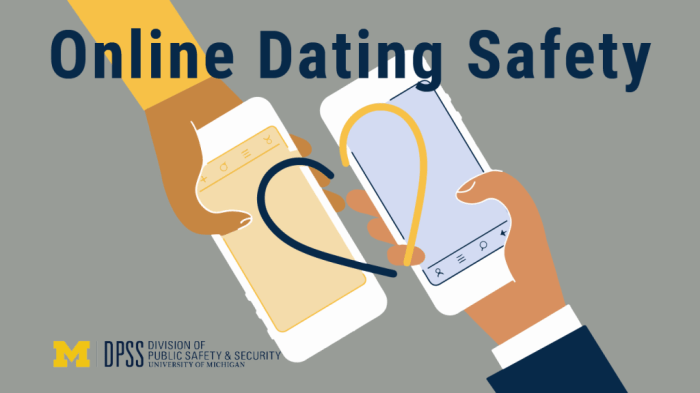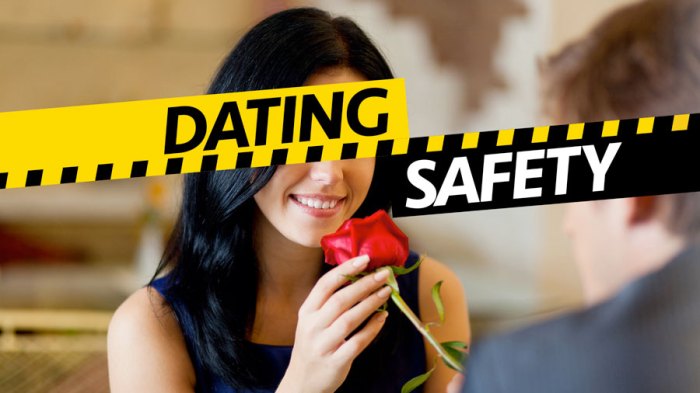Navigating the world of online dating can be exciting, but it's crucial to prioritize safety. Millions use dating apps in the US, creating a vibrant landscape of connection, but also potential risks. This guide provides essential safety tips to help you enjoy the experience while minimizing potential dangers. We'll cover everything from crafting a secure profile to navigating first dates, ensuring you can connect with confidence.
Understanding the potential pitfalls of online dating is the first step towards a safe and positive experience. From deceptive profiles to unwanted advances, awareness is your strongest defense. This guide equips you with practical strategies to identify red flags, verify profiles, and make informed decisions throughout your online dating journey. By following these tips, you can significantly reduce your risk and enjoy the benefits of online dating with peace of mind.
Profile Creation and Presentation

Source: googleapis.com
A secure dating profile begins with a balanced approach: providing enough information to attract potential matches while protecting your personal safety and privacy. This involves strategic choices in profile pictures, bio writing, and the level of detail shared about your life.
Sample Profile Showcasing Best Practices
The following example demonstrates a safe and effective profile approach. Remember that authenticity is key – tailor your profile to reflect your personality accurately.
Profile Picture: A recent, well-lit photo showing your face clearly. Avoid overly revealing or suggestive images. The picture should be a clear and honest representation of your appearance. Consider using a photo that shows you engaged in a hobby or activity you enjoy, adding context to your personality.
Bio: "Enthusiastic hiker and amateur photographer, always up for exploring new trails. Love trying new restaurants and spending time with friends. Looking for someone genuine and adventurous to share experiences with."
- Do: Use a clear, well-lit photo of yourself. Keep your bio concise and positive. Focus on your interests and personality. Avoid overly personal details in your bio.
- Do: Highlight your interests and hobbies to attract like-minded individuals. Mention your preferred communication methods (e.g., "Let's chat first before exchanging numbers").
- Don't: Share your full name, address, workplace, or other identifying information. Avoid posting pictures with location tags. Refrain from sharing overly personal or sensitive information in your bio.
- Don't: Use provocative or suggestive photos. Avoid using photos with other people that aren't easily identifiable.
Comparison of Profile Safety Features Across Dating Apps
Different dating apps offer varying levels of privacy and safety features. Understanding these differences is crucial for managing your online safety.
| Feature | App A (Example: Tinder) | App B (Example: Bumble) | App C (Example: Hinge) |
|---|---|---|---|
| Private Profile Visibility | Limited control; profile is generally public. | Allows for more control over who can see your profile. | Offers various privacy settings to control profile visibility. |
| Photo Verification | Offers photo verification for increased profile authenticity. | Offers photo verification to deter fake profiles. | Provides photo verification to confirm identity. |
| Reporting Mechanisms | Provides in-app reporting for inappropriate behavior. | Offers robust reporting features for user safety. | Has clear reporting mechanisms for harassment or scams. |
| Blocking and Unmatching | Allows users to block and unmatch profiles easily. | Provides straightforward blocking and unmatching options. | Facilitates easy blocking and unmatching to manage interactions. |
Risks of Sharing Personal Information and Alternative Approaches
Sharing excessive personal information on dating profiles increases your vulnerability to various risks, including stalking, harassment, and identity theft. It's essential to be mindful of the information you disclose.
Sharing details like your full name, address, workplace, or even your exact location can significantly increase your risk. Instead of directly providing such information, consider alternative ways to convey similar information. For example, instead of stating your exact workplace, you could mention your industry or type of work. Instead of your full address, you can mention the neighborhood or city you live in (without specifics). Always prioritize your safety and privacy by avoiding overly specific personal details.
Initial Contact and Communication

Source: uab.edu
Verifying a Potential Match's Authenticity
Verifying a potential match's authenticity involves more than simply looking at their profile pictures. A multi-pronged approach is recommended. Begin by comparing details provided in their profile with information found through independent searches. For example, if they mention working at a specific company, check the company website to see if their profile picture matches any employee photos. If they list their alma mater, search the school's alumni directory (if publicly accessible). Reverse image searching profile pictures through tools like Google Images can reveal if the photos are being used on other profiles or websites, potentially indicating a fraudulent account. Another effective method is engaging in conversation that subtly probes for details that would be difficult for an imposter to fabricate; for example, asking about specific aspects of their work or educational experiences. Inconsistencies or evasiveness should raise concerns. Finally, be wary of individuals who are overly eager to move the conversation offline quickly, especially before sufficient information has been exchanged to verify their identity.Red Flags in Online Communication
It's vital to recognize warning signs that may indicate potential danger during online communication. These red flags should prompt you to exercise extreme caution and, in some cases, cease communication entirely.- Inconsistent or contradictory information: Noticeable discrepancies between what they say in their profile and during conversations.
- Pressure to meet quickly: They persistently push for an in-person meeting before sufficient time has been spent getting to know each other online.
- Avoidance of video calls: They refuse or make excuses to avoid video chats, despite your attempts to initiate them. This can be a sign they are hiding their true identity.
- Excessive flattery or romantic declarations: Over-the-top compliments and declarations of love early in the communication phase can be a tactic to manipulate or groom.
- Financial requests or pleas for help: They ask for money, gifts, or assistance with financial problems, often under the guise of an emergency.
- Aggressive or controlling behavior: They become angry or demanding if you don't immediately respond or if you set boundaries.
- Poor grammar and spelling: While not always indicative of malicious intent, this can sometimes be a sign of a fake profile created by someone not fluent in your language.
- Suspicious links or attachments: They send you links to suspicious websites or attachments that could contain malware.
Safe Communication Practices Flowchart
A visual representation of safe communication practices can help users navigate online interactions more securely.[Imagine a flowchart here. The flowchart would begin with "Initial Contact," branching to "Verify Profile Information" (with steps like reverse image search, corroborating details), then to "Engage in Conversation" (emphasizing gradual information sharing and video calls), followed by "Assess Compatibility and Trust," leading to "Plan a Public, Well-Lit First Date" or "End Communication" if red flags are detected. The "End Communication" branch would have a note advising users to report suspicious profiles to the dating app.]Meeting in Person and Safety Precautions
Meeting someone you've connected with online for the first time in person can be exciting, but it's crucial to prioritize your safety. Taking proactive steps to ensure a secure environment will allow you to enjoy the experience without unnecessary risks. Remember, your safety is paramount.Prioritizing safety doesn't mean you should be overly cautious or avoid meeting people altogether. It means being informed and prepared. By following some simple guidelines, you can significantly reduce potential risks and ensure a positive first meeting.
First Date Safety Tips
Planning ahead and taking precautions can significantly improve your safety during a first date. These measures aren't meant to discourage meeting new people, but rather to empower you to make informed decisions and prioritize your well-being.
- Choose a public place: Opt for well-lit, populated areas like cafes, restaurants, or museums. Avoid secluded locations or going back to someone's home on the first date.
- Inform a friend or family member: Let someone know where you're going, who you're meeting, and when you expect to be back. Share your date's profile or contact information with them.
- Have a pre-arranged exit strategy: Plan how you'll leave if you feel uncomfortable. This could involve having a friend call you with a "fake emergency," having your own transportation, or identifying a nearby safe spot to meet a friend.
- Limit alcohol consumption: Drinking too much can impair your judgment and make you more vulnerable. Stay in control of your faculties throughout the date.
- Trust your instincts: If something feels off or makes you uneasy, don't hesitate to leave. Your gut feeling is often accurate.
- Avoid sharing personal information: Don't disclose sensitive details like your home address, workplace, or financial information on a first date.
Transportation Options for First Dates
Choosing the right mode of transportation for a first date can significantly impact your safety and comfort. Consider the pros and cons of each option to make an informed decision.
| Transportation Method | Safety Level | Pros | Cons |
|---|---|---|---|
| Driving yourself | High | Complete control over your travel and departure; ability to leave at any time. | May limit spontaneous activities or require driving in unfamiliar areas. |
| Taking a taxi or rideshare | Medium | Convenient, especially for unfamiliar locations; readily available in many areas. | Cost can be higher; potential for safety concerns depending on driver and vehicle. |
| Public transportation | Medium | Affordable and often readily available; offers a sense of anonymity. | Can be crowded and less safe in poorly-lit or isolated areas; travel times may be longer. |
| Meeting at a mutually accessible location | Medium | Reduces transportation concerns; eliminates potential safety issues related to travel. | Requires careful planning and coordination to ensure convenience for both parties. |
Recognizing Warning Signs and Trusting Your Instincts
Paying attention to your intuition and recognizing potential warning signs is crucial for ensuring your safety. These signs might be subtle, but they should never be ignored.
Examples of situations requiring immediate action include:
- Your date exhibits controlling or possessive behavior.
- Your date disregards your boundaries or makes you feel uncomfortable.
- Your date pressures you to consume alcohol or drugs against your will.
- Your date becomes aggressive or verbally abusive.
- Your date's actions or words significantly deviate from their online profile.
Remember, your safety is your responsibility. If any of these situations arise, trust your instincts and remove yourself from the situation immediately. Prioritize your well-being above all else.